The Man With No Name (Clint Eastwood):
“Don Miguel Roho…I want to talk to you!
Don Miguel, I hear you’re hiring on men.
Well, I just may be available.
I gotta tell you before you hire me, I don’t work cheap…!” – A Fistful of Dollars
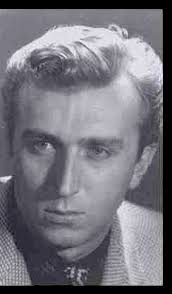
Sergio Leone was born in Rome on January 3, 1929. Considering that he was the son of a cinema pioneer (Vincenzo Leone, known professionally as Roberto Roberti) and a silent film actress (Bice Valerian), it is not surprising that he would follow the same professional paths as his parents. Initially setting out to study law, Sergio dropped out of university at age 18 to begin his own career in the film industry.
In 1948, Leone worked as an assistant to Vittorio de Sica during the production for the movie The Bicycle Thief. During the 1950s he began writing screenplays for historical epics – known in the industry as “sword & sandal” movies – which were a popular genre at the time. He also worked as an assistant director on several large-scale international productions, including Quo Vadis (1951) and Ben-Hur (1959).
This experience provided Leone with the ability to produce low-budget films that looked like A-list Hollywood productions.
During the next decade, the historical epics upon which Leone had cut his film making teeth began to fall out of fashion. Having long been fascinated by the mythology of the American West, he turned his focus towards a new subject. In time his films in this genre, along with those of his contemporaries, would become known as “Spaghetti Westerns”, due to being made primarily by Italian directors.
In fact, the first Italian Western film, La Vampira Indiana (1913) – which combined the genres of Westerns & vampires – was directed by Leone’s father, and featured his mother in the title role as Indian princess Fatale. Is it any wonder that Leone would come to make such an indelible mark on what had traditionally been American subject matter.

The Man With No Name:
“I don’t think it’s nice, you laughin’.
You see, my mule don’t like people laughing.
He gets the crazy idea you’re laughin’ at him.
Now if you apologize, like I know you’re going to,
I might convince him that you really didn’t mean it.” – A Fistful of Dollars
Based upon Akira Kurosawa’s picture Yojimbo, A Fistful of Dollars was Sergio Leone’s first release in the series of films that would later become known as the “Man with No Name” trilogy. Filmed mostly on location in Spain, the movie debuted in 1964 and was followed by For a Few Dollars More (1965), and The Good, the Bad and the Ugly (1966). Through this group of pictures, the director, who credited John Ford as a mentor, succeeded in updating a genre wherein the heroes and villains had always been clearly identifiable to the audience.
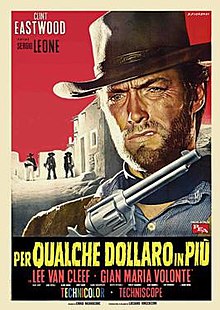
For A Few Dollars More 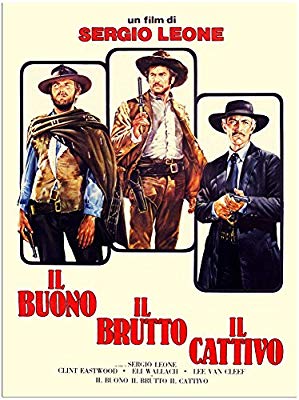
The Good, The Bad & The Ugly
In the 1980 book Cinema: A Critical Dictionary, Richard Corliss describes ”the Leone universe” as ”a blend of seamless contradictions: labyrinthine plots and elemental themes, nihilistic heroes with romantic obsessions, microscopic close-ups and macrocosmic vistas, circular camera work and triangular shoot-outs, a sense of Americana and a European sensibility, playful parody and profound homage.”
Some criticized his movies for being overly violent, to which he replied: ”The cowboy picture has got lost in psychology . . . The West was made by violent uncomplicated men, and it is this strength and simplicity that I try to recapture in my pictures.”
Gone were the days of good guys wearing white hats, and bad guys wearing black ones.
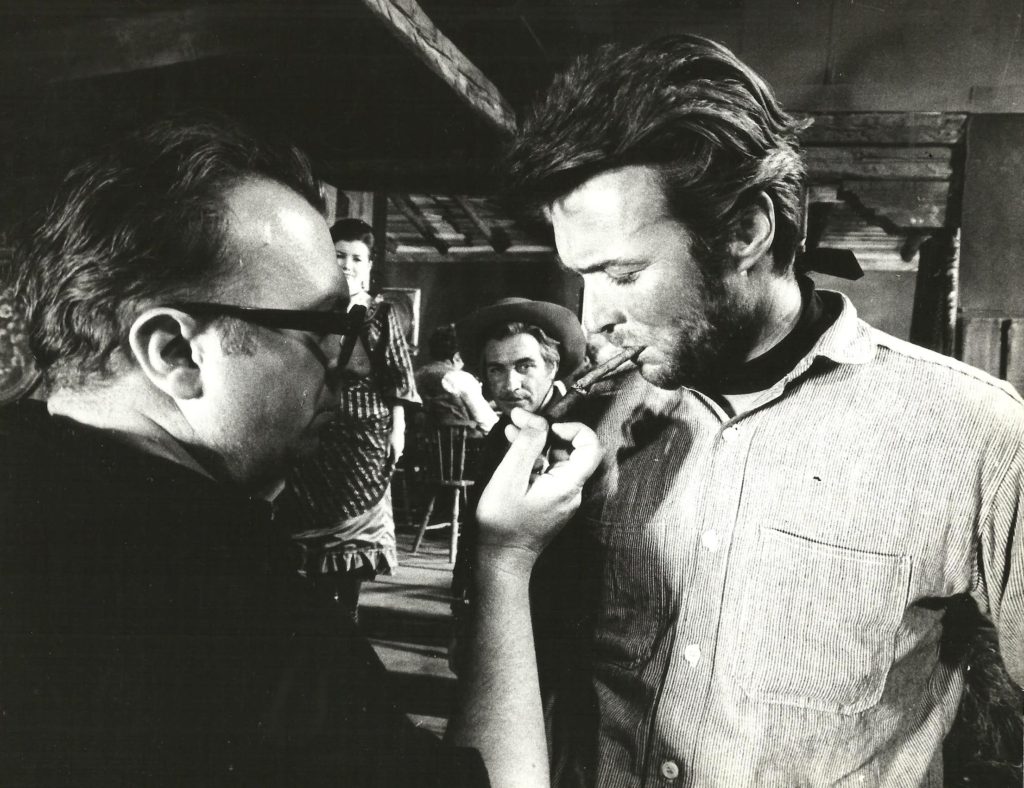
The Man With No Name: It’s a small world.
The Hunchback: Yes and very, very bad. Now, come on. You light another match.
The Man With No Name: I generally smoke just after I eat. Why don’t you come back in about ten minutes?
The Hunchback: Ten minutes you’ll be smokin’ in hell! – For a Few Dollars More

When the time came to add music to his Western films, Sergio Leone teamed up with his childhood friend, Ennio Morricone.
Like Leone, Ennio Morricone was a native Roman. He was born in the Italian city on November 10, 1928, to Libera Ridolfi and Mario Morricone. His first music teacher was his father, who was a trumpet player with various light-music orchestras. Mario taught his son how to read music and play several musical instruments.
Ennio entered the National Academy of St Cecilia at the age of 12, to study trumpet under the guidance of Umberto Semproni. He was enrolled in a four-year harmony program, which he completed within six months.
Throughout the 1950s, Morricone supported himself and his family by playing trumpet in jazz bands, as well as writing and arranging orchestral music for radio and television with the Italian broadcasting service RAI. Later in that decade, he became a top studio arranger at RCA Victor, working with a number of well known Italian pop artists.
Morricone’s first work in cinema was as a ghostwriter for films credited to other already well-known composers. Through this experience, the composer learned to craft simple, memorable themes.

In the early 1960s, Morricone had composed music for a number of Italian westerns, but it was his arrangement of an American folk song that intrigued Sergio Leone and prompted the director to seek the talents of his former school mate. Together they would create the distinctive score for Leone’s first “Spaghetti Western”, A Fistful of Dollars, and Morricone would go on to compose the music for all of Sergio Leone’s films.
“Where life had no value, death, sometimes, had its price. That is why the bounty killers appeared.” – Intro to For A Few Dollars More.

Charles Bronson 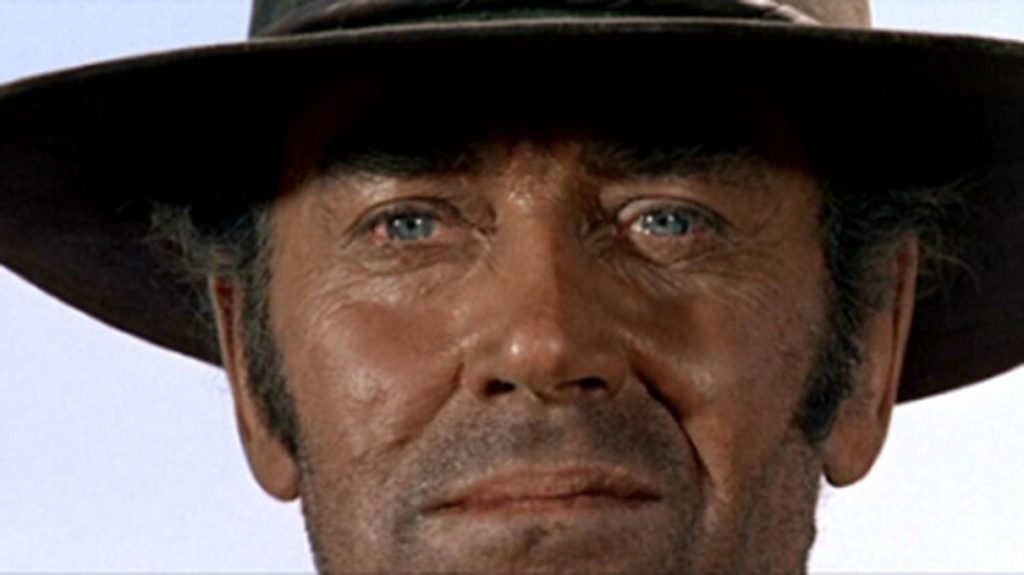
Henry Fonda
Known for extreme close-ups, and scenes that linger over the expressions of his actors, Leone used music to tell his stories as much – or more – than he did words.
“For me, the music kind of takes the role of the dialogue. I’m looking to share emotions through the music and especially through the psychology of the characters,” Sergio Leone commented in an interview from 1974.

Leone’s working relationship with his composer was unique from most other moviemakers, in the sense that Morricone was involved early on in the filmmaking process, usually before the script had been written. In an interview with Cinephilia & Beyond, Leone explains the role Morricone played in helping to shape the films:
“From Ennio, I ask for themes that clothe my characters easily. He’s never read a script of mine to compose the music because many times he’s composed the music before the script is ever written. What I do is give him suggestions and describe to him my characters, and then, quite often, he’ll possibly write five themes for one character, and five themes for another; and then I’ll take one piece of one of them and put it with a piece of another one for that character or take another theme from another character and move it into this character… And when I have my characters finally dressed, then he composes . . . I don’t enter into particulars with him. I give him the feeling and the suggestions of the characters.”
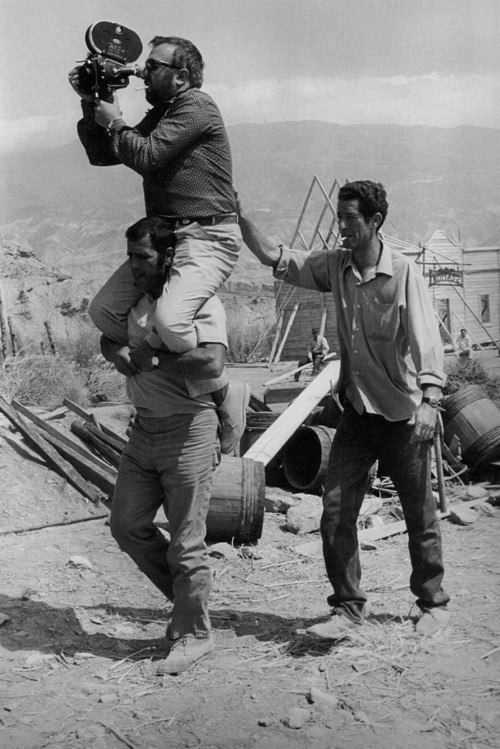
Ramón Rojo (Gian Maria Volonté):
“When a man with a .45 meets a man with a rifle, the man with a pistol will be a dead man.” – A Fistful of Dollars
With tight budget restrictions and the cost of large orchestras being prohibitive, it was necessary for Ennio Morricone to be creative in his uses of instrumentation for Leone’s Western film scores. To help realize the musical themes he had created for A Fistful of Dollars, Morricone turned to another childhood friend, Alessandro Alessandroni, and thus began what would become a 20-year collaborative relationship between the two men.

Alessandroni mastered the guitar and other stringed instruments at a young age; later he learned to play the tenor saxophone. Along the way, he recognized that he had an impressive ability to whistle, which came to be a distinctive and ethereal feature of Leone’s Western soundtracks. Alessandroni once spoke of this particular talent, “Anybody can whistle, but it is a matter of having a big quantity of breath and a small quantity of sound”.
Alessandroni had earlier formed his own vocal quartet, The Four Caravels, which he expanded to a sixteen-member group and renamed I Cantori Moderni (The Modern Singers), as he began working with Morricone on his film scores. One particular member of the vocal ensemble, soprano Edda Dell’Orso, would also feature prominently as a soloist in Morricone’s soundtracks for Leone’s Western films.

Gunshots, cracking whips, bell chimes, jews harp, harmonica, whistles & wordless vocals, along with Alessandro Alessandroni’s twanging Fender guitar, have become familiar elements in our modern perception of the soundtrack of the Old West.
Recently I heard a radio ad for a local sandwich chain that was touting their new “Southwestern” something or other. The accompanying music featured many of the sounds listed above, and I realized how deep in the contemporary folklore of the American West runs the influence of Ennio Morricone, the man referred to by many as simply “Il Maestro”.
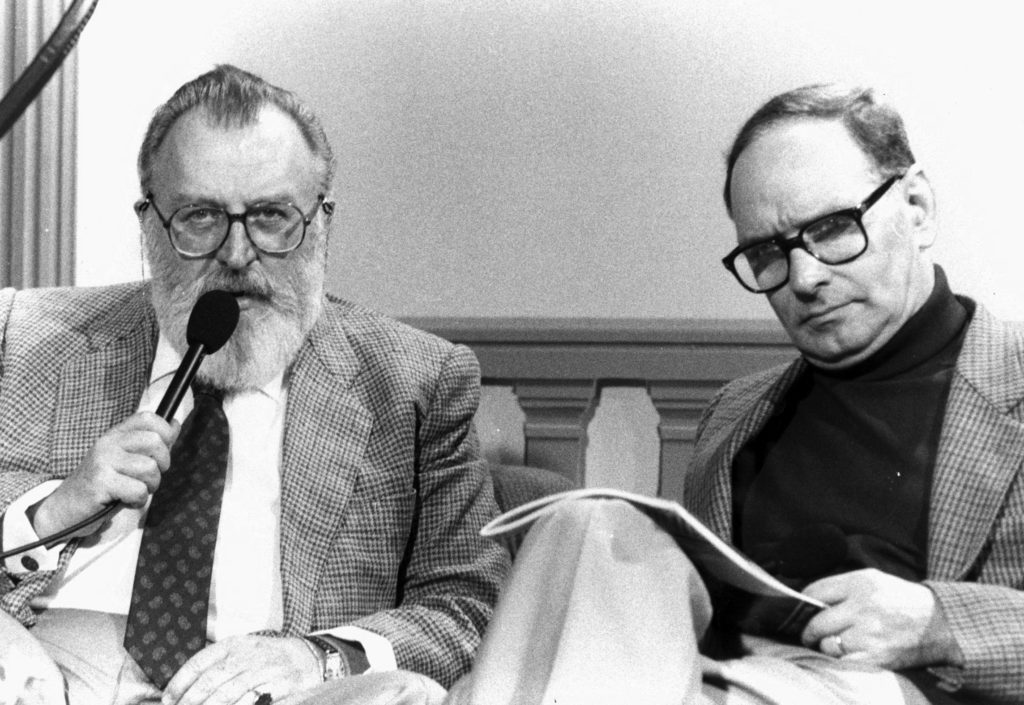
Blondie (Clint Eastwood) to Tuco (Eli Wallach):
“You see in this world there’s two kinds of people my friend – those with loaded guns, and those who dig. You dig.” – The Good, The Bad and The Ugly
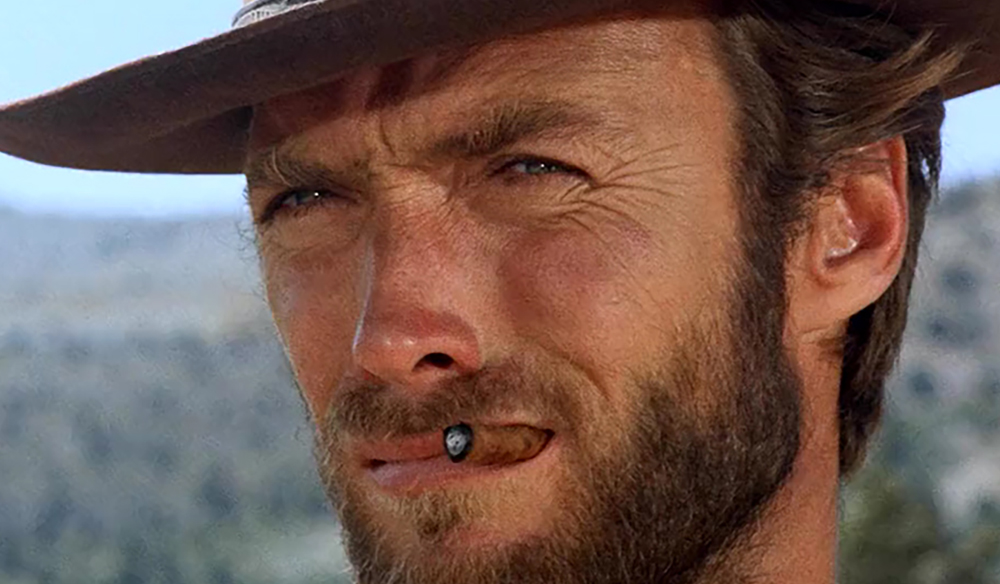
Clint Eastwood 
Eli Wallach
Despite the small budgets, the films of the “Man With No Name” trilogy enjoyed great success and were eventually released in the US several years after their European releases. In August of 1968 the original score of The Good, The Bad and The Ugly, was certified gold by the RIAA for sales of 500,000 units; it would go on to sell more than 3 million copies. Hugo Montenegro’s recorded version of “The Good, The Bad and The Ugly” theme, was also a hit, selling more than a million copies.

Morricone’s score for Once Upon a Time in the West is one of the best-selling soundtracks of all-time, with more than 10 million copies sold worldwide. The movie’s theme, “Man With a Harmonica”, sold more than 1 million copies in France alone. That track has been sampled by a number of artists on modern recordings.
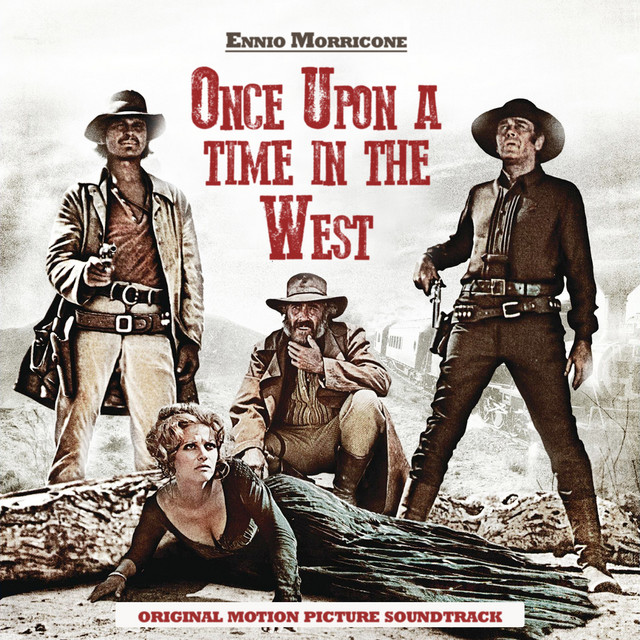
“L’estasi dell’ Oro” (Ecstasy of Gold), a theme from The Good, The Bad and The Ugly, was used as closing music by The Ramones and is featured as opening music by Metallica. Metallica has also performed a heavy metal version of Morricone’s theme.
Morton (Gabriele Ferzetti): Tell me, was it necessary that you kill all of them? I only told you to scare them. Frank (Henry Fonda): People scare better when they’re dying. – Once Upon a Time in the West
Ennio Morricone has composed over 400 scores for cinema and television, as well as over 100 classical works. He has sold more than 70 million records worldwide in a career that has spanned more than seven decades. In 1971, the composer received his first golden record (disco d’oro) for the sale of 1,000,000 records in Italy and later received a “Targa d’Oro” for worldwide sales of 22 million. He has received numerous awards & accolades, including Grammies, Golden Globes, BAFTAs, as well as many awards from his native Italy and other European nations. In 2007 he was given the Academy Honorary Award, which was presented by Clint Eastwood, being only the second composer to receive the award. In 2016 he won his first competitive Oscar for Quentin Tarantino’s The Hateful Eight.
I find it ironic, and immensely entertaining that this native Roman, who has never learned to speak English, and never spent a significant amount of time in the US, should have had such an indelible influence on our modern idea of the how the Old West sounded. I hereby salute “Il Maestro”!

Coming May 4 @ A Cowboy Song: I Should’ve Been a Cowboy
Sources:
https://en.wikipedia.org/wiki/Ennio_Morricone
http://www.alessandroni.com/Biography.htm
https://www.soundohm.com/product/alessandro-alessandroni/pid/22894/
https://en.wikipedia.org/wiki/Sergio_Leone
All photos sourced through internet searches, none belong to the author


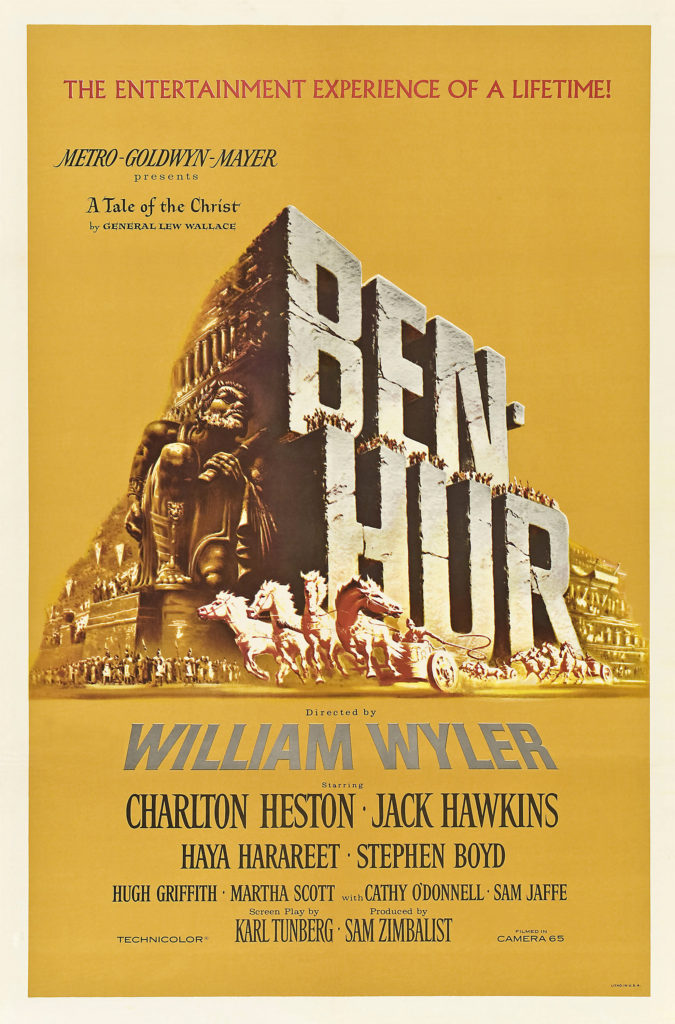
Odd , this page shows up with a black color to it, what color is the primary color on your webpage?